Niavaran Palace is one of the three famous historical palace complexes in Tehran. The various buildings at Niavaran Palace have transformed into museums filled with valuable historical artifacts. If you are interested in studying the history and contemporary culture of Iran, be sure to visit the historical-cultural complex of Niavaran, especially the special Niavaran Palace.
In this article in Parsi Tours , we will introduce Niavaran Palace in Tehran as one of Tehran attractions and provide you with complete information about the different parts of the Niavaran complex, visiting hours, and access to this complex.
Niavaran Palace is a prominent attraction in Tehran, located within the Niavaran Garden in the Shemiranat region. Visiting this palace is highly recommended to those who aim to take a tehran tour. Situated in the northeast of Niavaran Garden, it stands as one of the last royal residences in Iran. This complex is part of the trio of historical palace complexes in Tehran and is set in a delightful garden covering nearly 11 acres near the Alborz Mountains. It was once the residence of Mohammad Reza Shah Pahlavi’s family.
Niavaran Palace Complex After the 1979 revolution
After the Iranian revolution in 1979, its use was transformed, and it became a historical museum accessible to the general public.
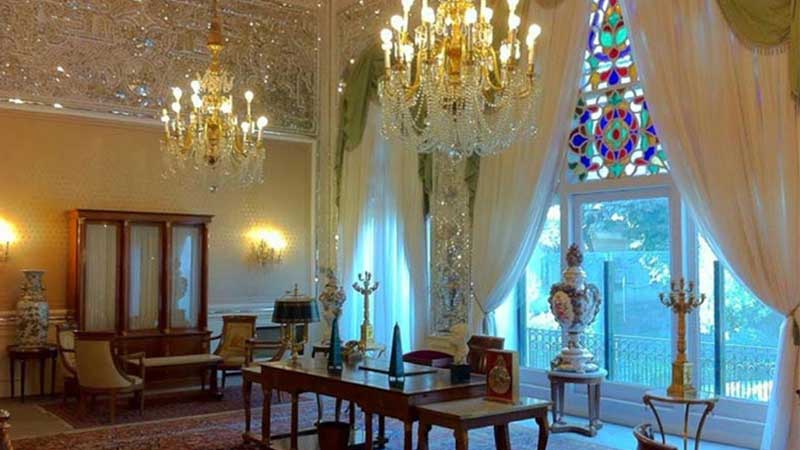
Interior of the Niavaran Palace
Niavaran Palace is referred to as such within the historical-cultural complex of Niavaran and is divided into distinct sections. Until 1999, It was jointly managed with Sa’dabad Palace, but it subsequently gained independence. This historical collection houses documents from the Pahlavi and Qajar historical periods.
The Niavaran Garden surrounding the exclusive Niavaran Palace, along with the other palaces and structures within the complex, boasts breathtaking natural beauty. The lush trees in Niavaran Garden reach towards the sky, creating an atmosphere considerably fresher than the surrounding neighborhoods.
In June 1998, Niavaran Palace of Tehran was officially recognized as a national treasure of Iran. Presently, this cultural-historical complex ranks among the most prominent landmarks in Tehran.
Niavaran Palace have a simple yet modern architectural style. Within the palace, visitors can admire beautiful stucco work, intricate mirror designs, and outstanding tiling. This palace also houses exquisite paintings by renowned domestic and foreign artists, valuable hand-woven carpets, and expensive decorative items.
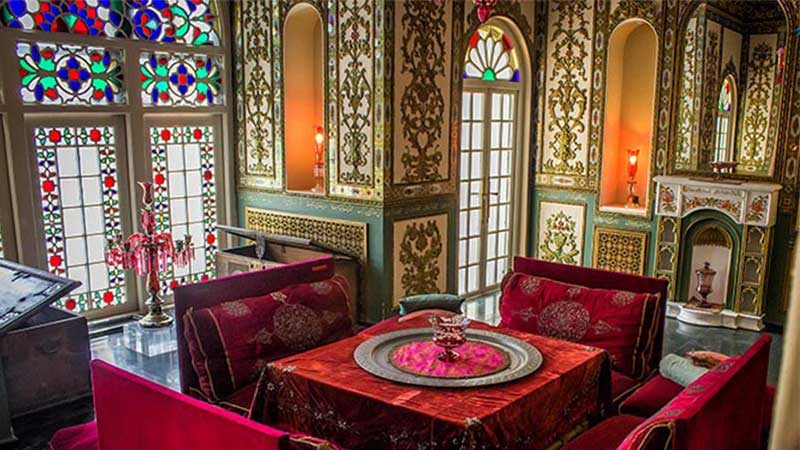
Beauty of Niavaran Palace
History of Niavaran Palace
The roots of Niavaran Palace date back to the Pahlavi era. Before the Pahlavi family took up residence in Niavaran Palace and Garden, it served as a summer retreat for the Qajar kings. In the past, the Niavaran area in Shemiranat, Tehran, was much smaller than it is today and lacked urban development. Shemiran and its surrounding regions were situated outside Tehran, in rural settings. Due to its proximity to the mountains and favorable climate from the north of Tehran, Fath-Ali Shah ordered the construction of a garden and mansion for summer getaways in this area.
At that time, the vicinity of Niavaran was rural, with the most well-known village being “Gerde Wei” and a vast canebrake was located in the neighborhood of this village. By the order of Fath Ali Shah, they built a garden and summer palace in the place of this vast canebrake. For this reason, Fath-Ali Shah’s summer garden acquired the name “Ney Avaran” (Ney in Persian means reek) which eventually evolved into “Niavaran” over time.
Subsequent to Fath-Ali Shah, other Qajar kings constructed their own palaces within Niavaran Garden. Mohammad Shah Qajar erected a small structure within Niavaran Garden, and Nasereddin Shah Qajar commissioned the construction of a mansion known as Saheb Qaranieh Palace. The last mansion constructed in this garden during the Qajar period was Ahmad Shahi Kushk.
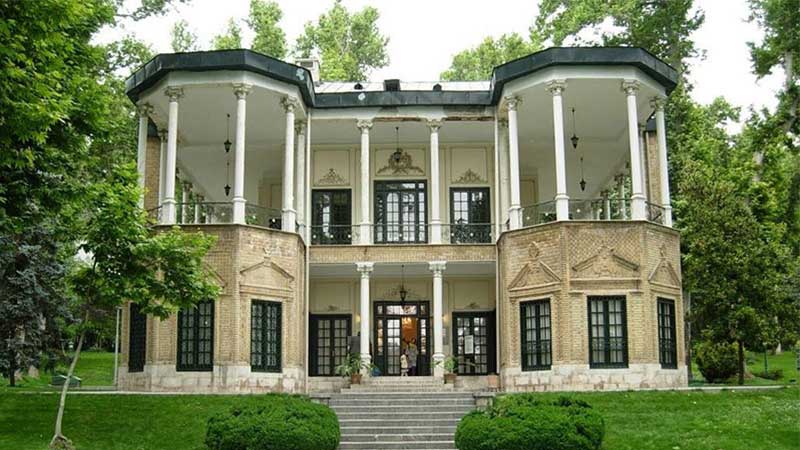
Niavaran complex
Niavaran Garden and its palaces remained largely unchanged until the time of Mohammad Reza Shah Pahlavi. In 1958, under the orders of Mohammad Reza Shah Pahlavi, the palace originally built by Fath-Ali Shah Qajar was demolished, and the present-day Niavaran Palace was constructed. Initially, the exclusive Palace was designed to host foreign guests, but upon completion, it became the residence of Mohammad Reza Pahlavi’s family. Niavaran Palace was inaugurated in 1967.
The Niavaran complex comprises the Niavaran Exclusive Palace, Saheb Qaranieh Palace, Hozkhaneh Museum, Ahmad Shahi Kushk, Jahannama Museum, an exclusive library, an exclusive car museum, and an inscriptions garden.
After the 1979 revolution, the responsibility for maintaining the palace and the Niavaran complex was transferred to the Ministry of Culture and Islamic Guidance. Over time, the palaces within this complex were repurposed as museums. Niavaran Palace was first unveiled as a Palace-Museum in 1986, and gradually, various sections of the Niavaran collection became accessible to the general public. The Jahannama Museum opened in 1997, followed by the Saheb Qaranieh Palace and Hozkhaneh Museum in 1998, Ahmad Shahi Kushk in 2000, the Royal Library in 2004, and the Museum of Dedicated Cars in 2012.
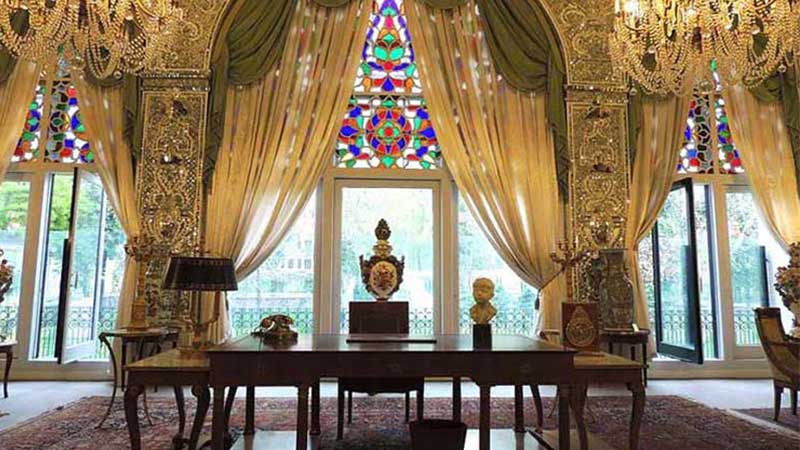
Reza Shah work desk
From January 2013 to 2018, Niavaran Palace underwent extensive renovation and restoration. During this period, the building’s paintings, plasterwork, mirrors, air conditioning system, movable ceiling, flooring, furniture, curtains, and decorative objects were all restored and modernized. CCTV cameras were also installed. In March 2018, Niavaran Palace was reopened to the public.
Location of Niavaran Palace
Niavaran Palace is situated in the northeastern part of Niavaran Garden, to the north of Tehran city. It is located in the southern section of Bahonar and Darabad streets. Access to this garden is possible via Bahonar Street (Niavaran). Niavaran Square and Park are also situated in the southern vicinity of Niavaran Palace.
You can use the metro or BRT fast buses to reach Niavaran Palace.
If you plan to visit this amazing place via public transportation, you can use the metro or bus services. To reach Niavaran Palace by metro, simply follow Line 1 until you reach the final station, Tajrish station. Tajrish station is located in Qods Square, from which you can take Tajrish-Dezashib or Tajrish-Niavaran taxis to reach the first entrance of Niavaran Museum. Buses traveling to Tajrish Square are available from various parts of Tehran, with the BRT line being a convenient option to Tajrish. You can travel the distance from Tajrish to Niavaran Palace by several bus lines, such as Azgol, Darabad, and Resalat Square, which all of them have stations near the first entrance of Niavaran Museum.
The Niavaran historical-cultural complex is open to receive tourists on all days of the week. The Karzin coffee shop in Niavaran Garden is an excellent place for relaxation and dining, offering breakfast services as well. It’s important to note that Niavaran historical-cultural complex is closed on public holidays.
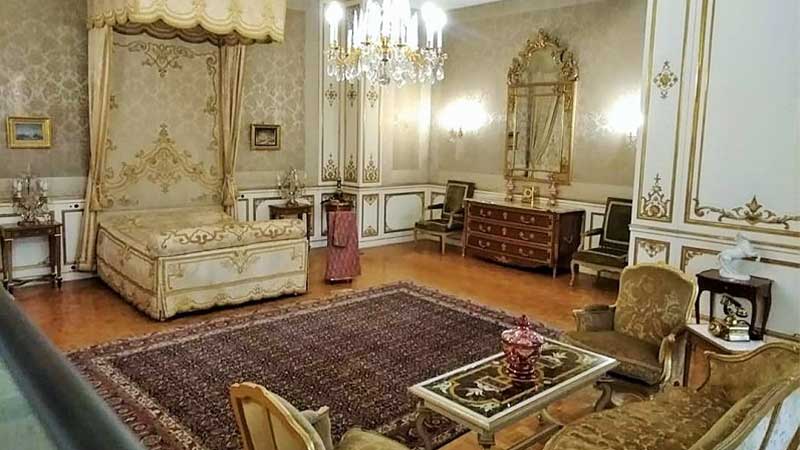
historical and cultural complex of Niavaran
Address: Tehran, Shahid Bahonar Square (Niavaran), historical and cultural complex of Niavaran
Phone: 021-22282012-15
Visiting hours for Niavaran collection: Spring and summer from 9 AM to 7 PM, and autumn and winter from 8 AM to 5 PM
Garden entrance fee: 5,000 Tomans for domestic tourists, 50,000 Tomans for foreign tourists
Niavaran exclusive palace ticket price: 5,000 Tomans for domestic tourists, 50,000 Tomans for foreign tourists
Jahan Nama Museum ticket price: 4,000 Tomans for domestic tourists, 30,000 Tomans for foreign tourists
Ticket price for Ahmad Shahi Kushk: 4,000 Tomans for domestic tourists, 30,000 Tomans for foreign tourists
Private library ticket price: 4,000 Tomans for domestic tourists, 30,000 Tomans for foreign tourists
Saheb Qaranieh Palace and Hozkhaneh Museum are currently closed for visits.
Architecture of Niavaran Palace:
The architecture of Niavaran’s exclusive palace is characterized by a blend of simplicity and modernity. This two-and-a-half-story structure spans an area of approximately 9,000 square meters and features a retractable roof made of aluminum. The roof of Niavaran Palace occasionally opens to allow visitors to watch its beauty in action. Inside the palace, many of the original furnishings, curtains, decorative items, and valuable works by Iranian and foreign artists, which were present during Mohammad Reza Shah Pahlavi’s era, have been preserved.
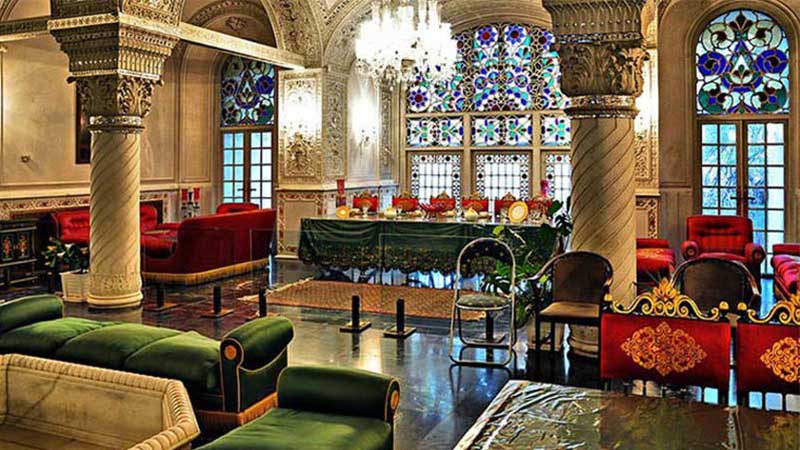
Unique Architecture of Niavaran Complex
The architectural design of the this masterpiece was executed by Mohsen Foroughi, a renowned professor of architecture and then-president of Tehran University’s Fine Arts department. The stucco work at Niavaran Palace was masterfully crafted by Master Abdullahi, while the intricate mirror designs were created by Master Ali Asghar. The palace’s facade showcases tiles crafted by Master Ibrahim Kazem pour.
The design and construction of Niavaran Palace skillfully blend traditional Iranian and modern European architectural elements. This palace stands as the only royal building featuring a retractable roof. Each floor of Niavaran Palace boasts a unique design, and we will explore these sections in detail.
The First Floor of Niavaran Palace
This floor includes the main reception room and a private cinema hall. Mohammad Reza Shah Pahlavi used the reception hall to welcome the most important foreign dignitaries. The luxurious hall features modern, elegant furniture, imported from Germany and France, and designed by a team of French interior architects. Attention to color coordination and decorative design is evident throughout the hall.
The exclusive Niavaran Palace cinema hall is particularly interesting in design. This 400-square-meter space is equipped with full movie projection facilities and has been open to visitors since 2016, following renovations.
The first-floor hallway houses 19th-century French porcelain tableware, adorned with portraits of Napoleon Bonaparte and the royal family. Among the carpets on this floor, one can find some of Iran’s finest handwoven carpets, showcasing the artistry of Isfahan and Kerman artists. The most renowned Iranian carpet on display in this reception room features depictions of Iranian kings and prominent figures from the Achaemenid period to the Qajar era. This priceless masterpiece was crafted by the Iranian artist Master Ali Kermani. The central design of the carpet portrays the likenesses of the kings, while the periphery features paintings and illustrations from ancient Iran. Other exquisite Kermani carpets in this hall include Sheikh Sanan and Dokhtar Tarsa carpets.
All the decorative dishes in this hall hold historical significance, with notable examples being Marlik and Amlesh archaeological pottery. Several precious dishes and artifacts in this hall were gifted by foreign governments to the Iranian government, including a beautiful silver dish presented by Romania to the Iranian king. In one corner of the reception room, you can find a piano gifted by the German Embassy to Mohammad Reza Shah Pahlavi. Another noteworthy feature of this hall is Sheikh Sanan’s symbol, a piece by the renowned artist Parviz Tanavoli. The room’s walls also display outstanding paintings by both domestic and foreign artists, such as Mohsen Foroughi’s Bijane Tabiat painting and a work by Bahman Mohasses.
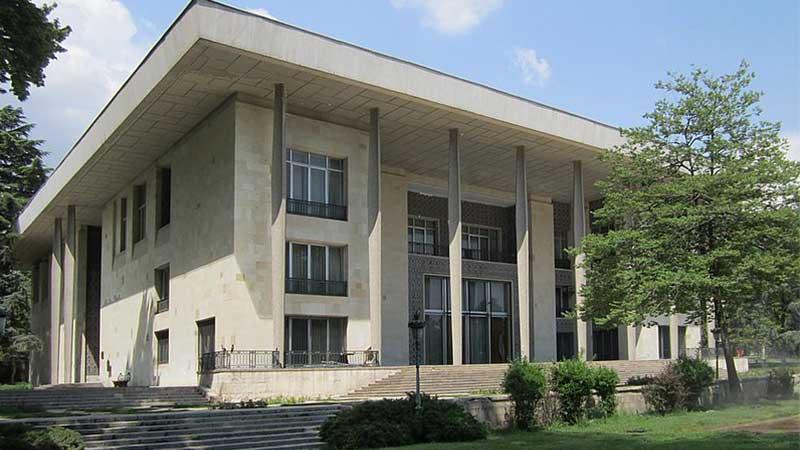
Modern architecture of Niavaran Complex
Prominent paintings by foreign artists in this hall include:
“Three Women” by Marie Lorensen
Portrait of Farah Diba by Vidal Cordas
Landscape painting by Alfred Sisley
“Faces of Two Women” by Jay Goldern
“Mutmarter of Paris” by Utrillo
Portrait of Mohammad Reza Pahlavi by VF Draper
“Mortmarter of Paris” by Elise Malquet
Jungle painting by Marwick Carla Mingle
Conclusion
As we conclude Part 1 of our journey through the Niavaran Complex, we have merely scratched the surface of the richness and historical significance that this remarkable site holds. Make sure to Join us in Part 2 as we, in persian travel agency, continue our exploration of this historical treasure trove, where each visit unveils a new layer of Iran’s captivating past.



